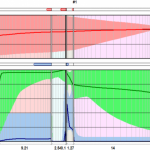
We’ve totally fucked this one up.
Energy use in buildings is complex and difficult to predict even for the smartest of people (performance gap explained here)
and even with the most detailed model, the energy use of the real world building can be way off. Modelers and designers universally recognize this. But if you are not given useful design criteria to start with, imagine what results that can produce. The way we calculate energy use and sufficient internal temperatures in New Zealand has many flaws.
Heating is kind of covered under the building code under Clause H1 – Energy Efficiency. It’s also definitely required in G5 – Interior Environment and E3 – Internal Moisture (but a story for a different day, today is about energy use). This H1 clause asks designers to meet a maximum Building Performance Index of 1.55. But only for houses, apparently schools, hospitals, and offices don’t use energy that we care about. That is the requirement of the building code, if you’re designing a house, meet an imaginary number with no relevance to anyone. Insulation requirements are part of an acceptable solution but not a building code requirement. There are some fluffy requirements to ‘provide adequate thermal insulation’ but nothing with teeth to it beyond this BPI number. Funny enough, this is one of the only building code clauses with a quantitative requirement, most are just ‘make sure things are adequate’.
The BPI is defined as follows:
Building performance index (BPI) in relation to a building, means the heating energy of the building divided by the product of the heating degrees total and the sum of the floor area and the total wall area, and so is calculated in accordance with the following formula: BPI = heating energy / heating degrees total x (floor area + total wall area)
Heating energy, in relation to a building, means the energy… needed to maintain the building at all times within a year at a constant internal temperature under the following standard conditions: (a) a continuous temperature of 20°C throughout the building…
Using a mathematical technique of variable substitution (also used in law), I’ll substitute the word heating energy, as defined by the code, into the BPI definition:
BPI = (the energy needed to maintain the building at a continuous temperature of 20°C throughout the building) / heating degrees total x (floor area + total wall area)
Is that how you read it too? Seems pretty straightforward, figure out how much energy is takes to keep the home at 20 C. But wait, H1/AS1 also says this:
- The NZBC has no requirement for the maintenance of interior temperatures except as required by NZBC G5 for old people’s homes and early childhood centres. The 20°C stated in the definition of heating energy is for calculation purposes only.
If 20C isn’t a code requirement (even though it is in G5 and E3) then what purpose does the BPI serve? Are you saying I can’t design a building that exceeds some energy value but I’m allowed to build one? Not to mention there is no way to actually measure the heating energy from your monthly energy bill. Nicely written clause.
Put a pin in that for a second (another article I assume) and let’s dig into this BPI formula further.
NIWA is our all knowing, all telling lords of meteorological data, and they are damn good at it. They seriously have heaps of data ranging back decades and know every little nook and cranny of this fine country. They have a reasonably simple explanation of a heating or cooling degree day:
Cooling and heating degree days are measurements that reflect the amount of energy that is required to cool or heat buildings to a comfortable base temperature, which in this case is 18°C.
Put simply you choose a base temperature, (most of the world would choose 18C), and if the outside temperature is 17C for 1 hour, that is 1 Heating Degree Hour. You then add up all the hours * temperature difference of the year divide by 24 hours to get to the Heating Degree Day (HDD). There isn’t an international standard for this but HDD base 18 is pretty commonly referenced. Look at this, you can just type in any place on the planet and get the answer: https://www.degreedays.net/. And everyone could measure their climate in the same way around the world and what a wonderful world it would be.
Of course that would have been far too simple for NZ
We had to put our own sciency-spin on things. So we came up with our own special brand of defining a heating degree day. Hold on tight, it’s about to get super weird.
- 14C. Let’s use that as the base temperature. Why? Because we like our homes cold and we want to be different. The base temperature is supposed to represent the temperature at which heating would be required to keep above some healthy indoor temperature.
- Only the heating months. What’s a heating month? A month where the mean (average) temperature is less than the 14C. This means cold nights in the spring and autumn don’t count, just the winter is when we heat our homes apparently.
- Heating degree. Remember how We (the world) defines the heating degree hour? Well to hell with that. Let’s just take the mean temperature of the entire month, and subtract 14 and we’ll call that our heating degree temperature. That seems entirely logical.
- No mention anywhere of a cooling degree day
So we could have used hourly data (and that’s what NIWA does) to calculate our HDD, but instead we chose to use the mathmatical mean of an entire month and ignore the shoulder months. and ignore cooling because we have more heat pumps than Bangkok and they’re ‘efficient’.
Ok, so all that to say, the way we currently calculate (or don’t even bother trying to calculate) the energy use in our buildings is so wildly removed from reality no one could even figure out the energy use of a proposed building using this if they tried. It’s technically implausible that this calculation would result in a predictable energy use outcome.
So if our current calculation is that fucked up, what should we do instead?
Energy intensity. The energy you use per square metre. It’s a simple concept. Divide your annual utility bill by your floor area and you get a number in kWh/sqm*yr, your Total Usage Intensity (TUI). A universal number that could be applied to every building no matter how complicated or unique your building might be. And you could even do crazy things like calculate your monthly energy bill in dollars, how useful would that be?
This is the premise behind the Energy Step Code Aotearoa from Primary Energy (ESCAPE). Make the measurement of energy use really, really, really, simple so we can actually measure it. Then once we understand how to measure it, we can start to reduce energy use. We can debate all the procedures, processes, verification and targets later on, but let’s starting talking about energy use in an actual language that has some context to it.
The Building Performance Index is an interesting idea. But if anyone has ever tried to actually calculate the number for a particular building you are lying. The net result of this is we have an Energy Efficiency code clause that no one understands or could possibly enforce.
We suggest the biggest, easiest change the building code could make is changing the unit of measurement from the BPI to TUI. A number with context, certainty and almost universal understanding that even a real estate agent could understand. And until we make such a change, we’re just taking wild guesses at the energy performance of our buildings.





